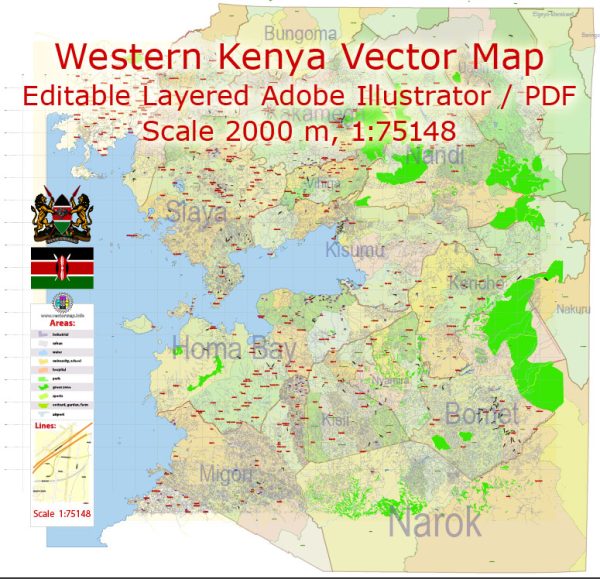The western part of Kenya, like many regions in Africa, has a rich history shaped by a combination of indigenous cultures, colonial influences, and post-independence developments. The urban development in this region has been influenced by various factors, including economic activities, social dynamics, and political changes. While the history of specific towns and cities may vary, a general overview can be provided.
Pre-Colonial Era:
Before European colonization, the western part of Kenya was home to various ethnic communities such as the Luo, Luhya, and Teso. These communities had their own social and economic structures and engaged in agriculture, trade, and other activities. Urbanization, in the Western sense, was not prevalent during this period, as societies were often organized around decentralized villages and small settlements.
Colonial Era:
The arrival of European colonial powers, primarily the British, in the late 19th century, marked a significant turning point in the region’s history. The colonial administration established administrative centers, trading posts, and missionary stations, laying the foundation for urban development. Towns such as Kisumu (then known as Port Florence) and Eldoret began to emerge as centers of commerce, administration, and transportation.
Economic Activities:
The western part of Kenya has been historically significant for its agricultural activities. The region is known for fertile soils, and cash crops like tea, coffee, sugarcane, and maize have played a crucial role in shaping the economy. The development of urban centers was often closely tied to these economic activities, with towns growing around trading hubs and processing facilities.
Transportation Networks:
The establishment of transportation networks, including railways and roads, further facilitated urban development. Cities like Kisumu benefited from their strategic locations along Lake Victoria and the railway network, becoming important transportation and trade hubs.
Post-Independence Period:
After gaining independence in 1963, Kenya, like many African nations, experienced a period of nation-building and urbanization. The government invested in infrastructure, education, and healthcare, contributing to the growth of urban centers in the western part of the country.
Contemporary Urban Development:
In recent decades, urban development in western Kenya has been characterized by a mix of challenges and opportunities. Rapid population growth, rural-to-urban migration, and economic shifts continue to shape the urban landscape. Towns like Kisumu have seen modernization, with improved infrastructure, commercial developments, and a growing service sector.
Challenges:
Challenges such as informal settlements, inadequate infrastructure, and uneven economic development persist. Local governments and organizations are working to address these issues and promote sustainable urban development.
In summary, the history of urban development in the western part of Kenya is a complex narrative influenced by pre-colonial traditions, colonial legacies, economic activities, and post-independence initiatives. The ongoing efforts to address contemporary challenges underscore the dynamic nature of urbanization in the region.


 Author: Kirill Shrayber, Ph.D.
Author: Kirill Shrayber, Ph.D.